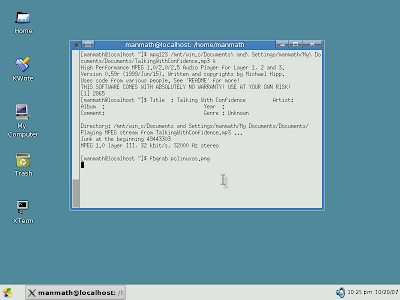Let me ask you a question - why does a Linux distribution need release cycles?
A software release is the distribution, of a new and upgraded version of a computer software product. Each time a system or a software program is changed, the developers and the company (or community) doing the work decide on how to distribute the software (or the latest changes to the software) to the users (customers or community members or general public). Software patches are one method and the full package (full OS and/or software including the patches and changes) is the other.
Generally a distribution undergoes a release cycle such as: pre-alfa, alfa, beta, release candidate, general release and the boxed copy. A release cycle is necessary to be on the edge of the latest stable software.
So, why does PCLinuxOS lack a regular release cycle, whereas Ubuntu, Fedora and OpenSuse, Mandriva come up with roughly two releases and many alphas, betas, rc (release candidate)s and boxed editions? The reasons are:
- PCLinuxOS repository keeps itself always updated with the latest in the Linux World. The users can easily update their systems online, so there is no need to download the full bundle. It's tiresome. By the way, every release of PCLinuxOS is so stable, up to date and usable that any desktop user can have happy computing for quite a long time (till a major release), even without installing the updates.
- PCLinuxOS has a unique approach to releases (and updates). Each of its release comes with some major updates, so that the user can feel the difference in the Linux world in general (between two consequitive releases) and PCLinuxOS in particular. That's why there are discernible changes among PCLinuxOS 92, 93 (Big Daddy) and 94 (2007). In other Linux distributions (Ubuntu, Mepis, Fedora, Suse...) you will hardly find any major difference between two releases, except for some change in software update numbers.
- PCLinuxOS has no set dates for releasing. This helps the developer and the community to be patient and work on the distro steadily to offer a really stable and usable distro, when they are at all satisfied after much alpha, beta and release candidates. Hence, every PCLinuxOS release has very less number of bugs compared to other distros.
- Frequent Release Cycles create chaos in Linux User Community. They feel the urge to update (though for not worthwhile benefits). And they spare much work-hours in tweaking the system, updating, installing and configuring. The actual productive computing is ignored. But late and stable releases help users to work on a usable system and forget about the update thing, till a really major release knocks in.
As of now, I think the next PCLinuxOS release will be groundbreaking with stable KDE4. So, I would tell every Desktop Linux User to get back to life and work on PCLinuxOS 2007, than trying the minor updates of Gutsy, Herdy, Celena, bla... bla.... bla…..










